Consultancy firm Vortus celebrates forty years of existence this year. This was celebrated September 30 during an anniversary seminar at the Van der Valk Hotel in Ridderkerk. Around eighty clients, relations and acquaintances were given presentations by Ep Heuvelink of WUR, Ronald Hoek of Blue Radix, and former football pro Jan van Halst. During the celebration, a magazine specially published in honor of the anniversary was also unveiled.
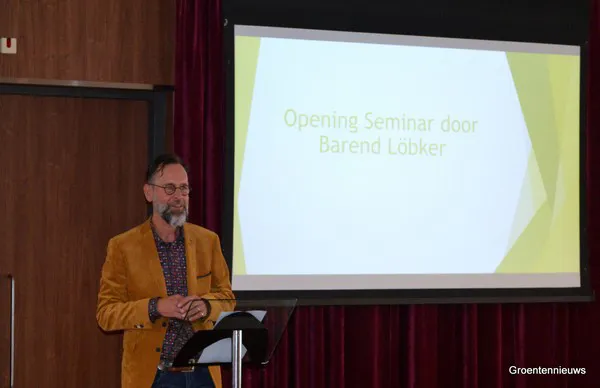
Barend Löbker.
The afternoon began with opening remarks by Barend Löbker, director and owner of Vortus. He couldn't help but quickly touch on the energy crisis and drew a parallel with the time when Vortus was founded. Back then, too, there was a crisis. High gas prices were also a problem then. "As a grower, my father still went to protest in The Hague," he said.
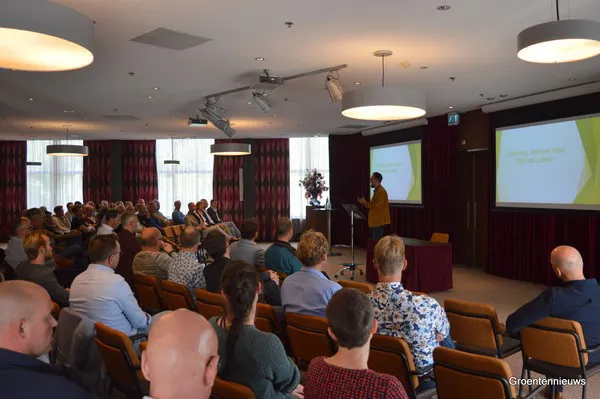
Horticulture came through that crisis and has continued to develop ever since, despite even more frequent crises. "It is difficult to see the bright side at the moment, but I am sure it will come again," Barend concluded in his opening remarks.
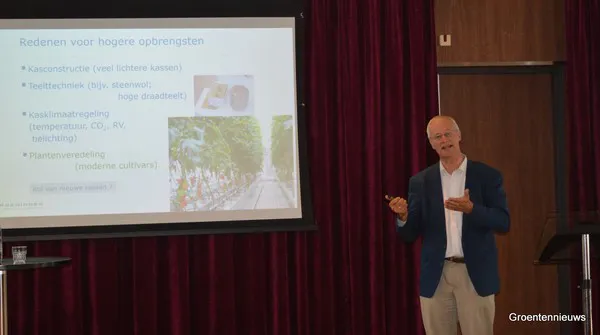
Ep Heuvelink.
Tomato production on the rise
Ep Heuvelink of Wageningen University & Research was then given the floor. He took the audience through several studies. First, he addressed the question of how it is possible that tomato cultivation has started to yield more and more kilos. The professor showed that every year with the arrival of a new variety, 0.7% more yield is obtained from a tomato crop. He explained this partly by an increase in the amount of water in a tomato and partly by an increase in total dry weight. The water thing, he noted, is not popular. Just like that in a widely grown tomato variety from the 1950s (Moneymaker), the dry matter percentage is light at 5.5% higher than in a widely grown modern truss tomato variety consisting of 4% dry matter. "But that does not necessarily mean that those modern tomatoes have less taste," the associate professor pointed out. "In this respect, how the dry matter is constructed also plays an important role."
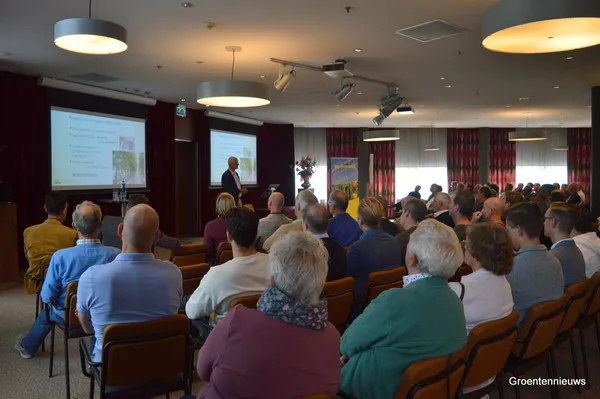
Exposure research
At WUR, a lot of research has been done on exposure. Not directly something that many growers can do something with, with today's knowledge, Ep realized, but nevertheless, he ran through some trials that also involved advisers from Vortus. He showed what red light does for a tomato crop (the light is efficiently converted by plants into production), and how intermediate lighting can ensure higher yields (by letting lower-hanging leaves get used to light sooner, they can use light more efficiently later in growth) and what far-red does to a tomato and lettuce crop. In tomato, it varies by variety. "Favourable to the advisers at Vortus," chuckled the professor. "With that, there is more room for them to give good growing advice." Then he continued on a more serious note about the advantages of far-red in a spectrum (at the same light intensity, adding far-red stimulates growth more than adding red-blue) and for lettuce (far-red gives faster growth). A disadvantage of red, however, is that it can increase the susceptibility of varieties to Botrytis and, in lettuce, create somewhat lighter, less compact lettuce heads.
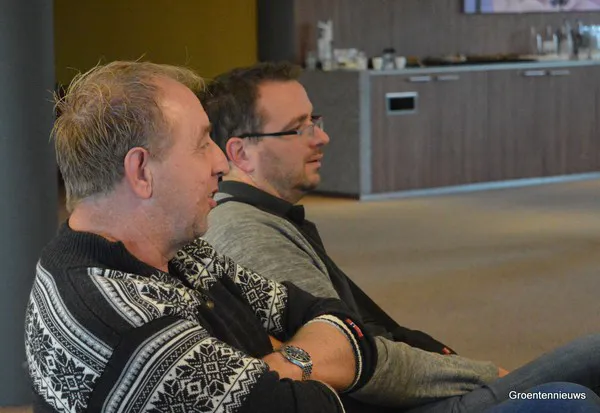
Pieter van Staalduinen speaking, with grower Thomas Henniger next to him, one of the international guests for whom Pieter translated.
After Pieter van Staalduinen, adviser of Vortus was asked by moderator Stefan Stolk to explain how he makes the translation between studies such as those of the WUR and the grower's practice - "it helps us a bit in the right direction, but as eight advisers we are not robots, so everyone keeps their own vision" - Ronald Hoe of Blue Radix was given the floor.
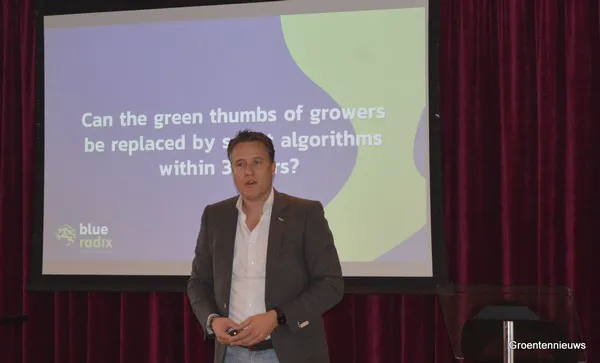
Ronald Hoe.
Ronald asked a tantalizing question: Will algorithms replace growers' green fingers within three years? Even before then, the room was well underway with a myriad of questions, and Ronald's question also generated plenty of responses. Two fingers went up when asked who agreed with the statement. It was also laughingly suggested that there would then be "no more work for Vortus consultants." Ronald then argued that he certainly doesn't think that's the case. At Blue Radix, they believe in an interaction between an algorithm-based system called Crop Controller at Blue Radix and the creativity and knowledge of growers. The CEO of the smart software company also pointed out that in the form of Autonomous Greenhouse Managers, there are also still people watching what the algorithms do together with the grower.
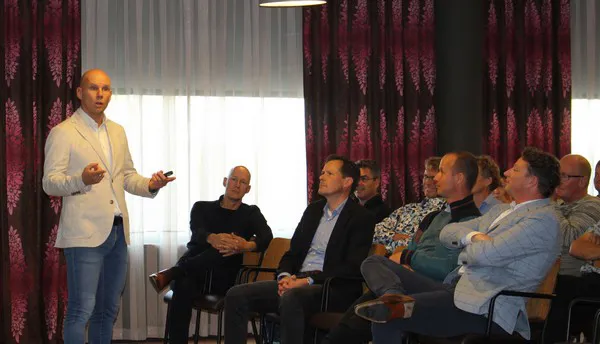
Jan van Halst speaking.
At Vortus, they closely follow the development of techniques such as Blue Radix's. At the end of Ronald's presentation, Barend again drew a parallel with the old days. "Before climate computers made their appearance in greenhouses, my father sometimes cycled through the greenhouse ten times a day to open and close the windows everywhere. Now a climate computer controls that, and it saves growers time. The same goes for algorithm-based systems. They can help growers."
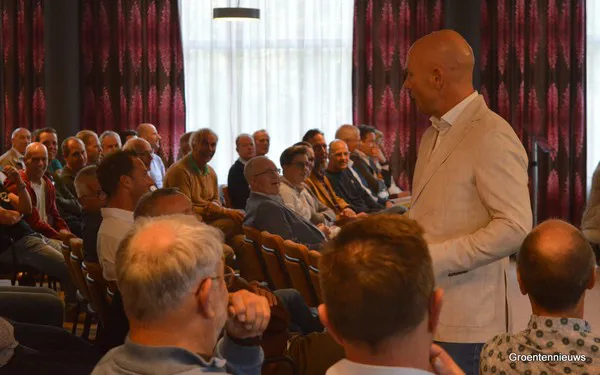
After a break, the second part of the afternoon was reserved for a presentation by Jan van Halst. These days, the former football pro has his own training and coaching agency. He also regularly holds presentations, and that was very noticeable in Ridderkerk on Thursday afternoon. For an hour, he captivated the audience with a mix of football anecdotes (the imitation of an East German football coach drew a lot of laughs), self-criticism, and also with his core message: how to become a coach from a boss? By, among other things, looking closely at how you address people and in which situation you apply which way of communication. "If you always communicate in the same way, as the East German coach did, it doesn't work after a while. In the football dressing room, people mocked the trainer after a while."
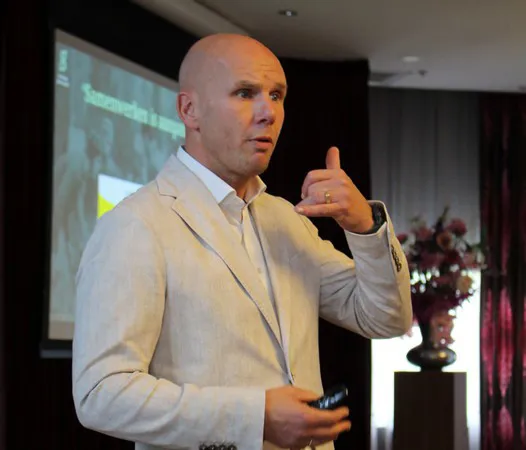
After a closing video by Oprah Winfrey, from which Jan highlighted the message that "everyone wants to be seen," it was time to put that directly into practice over drinks. People listened carefully as old acquaintances chatted over a glass of beer, and at another table, some German guests sought each other out to catch up. Inevitably, this again included the energy crisis. However, this did little to dampen the atmosphere during Vortus' anniversary celebrations.
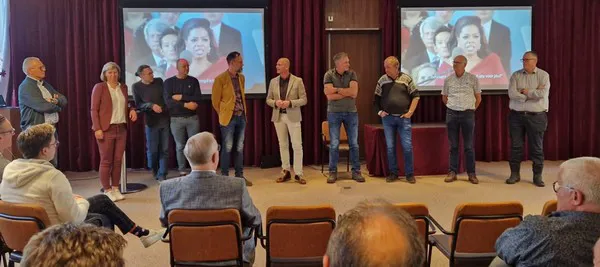
Vortus' advisers would rather go into the greenhouse than take photos, but here we have them all neatly lined up anyway.
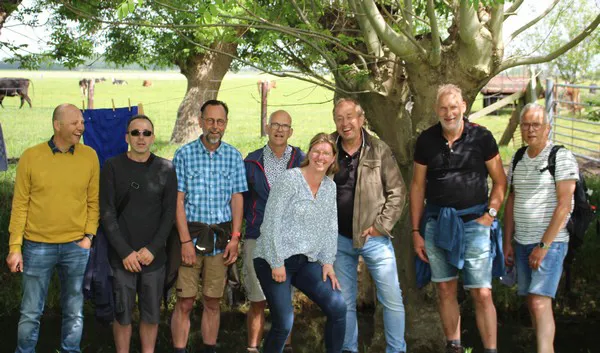
Another team photo during a team outing this summer.
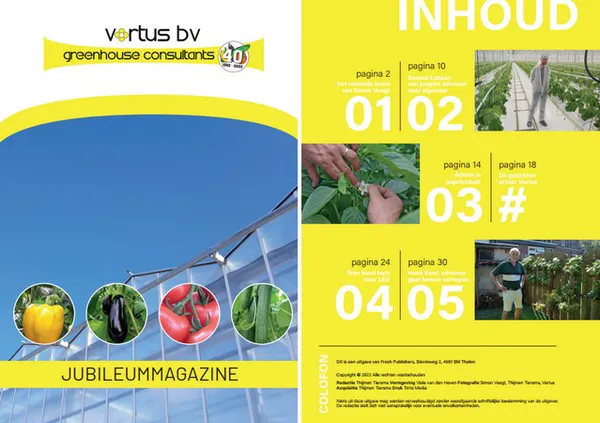
The anniversary magazine features stories from Barend Löbker, Simon Voogt, Henk Koot, Daan Boonman, Ruud van den Berg, Fluence, and the Vahl brothers. Click here to enlarge the table of contents.
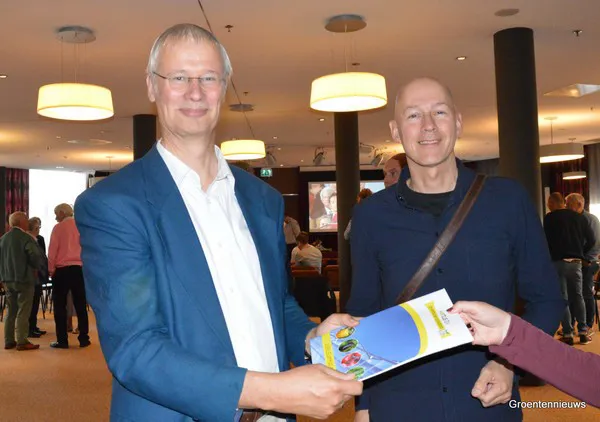
Ep Heuvelink of WUR and Leo Lansbergen of Fluence receive a magazine.
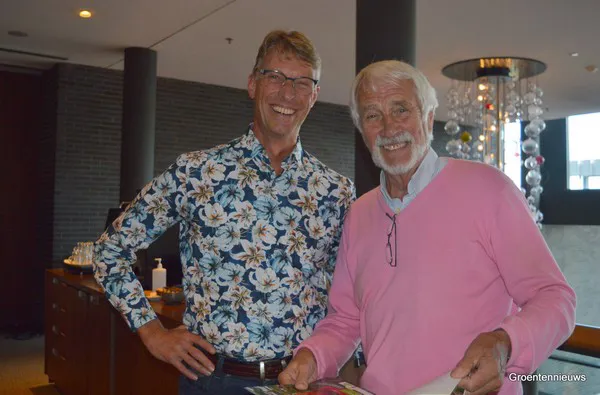
Former colleagues: John Potters (now Vreugdenhil Young Plants) and Henk Koot.
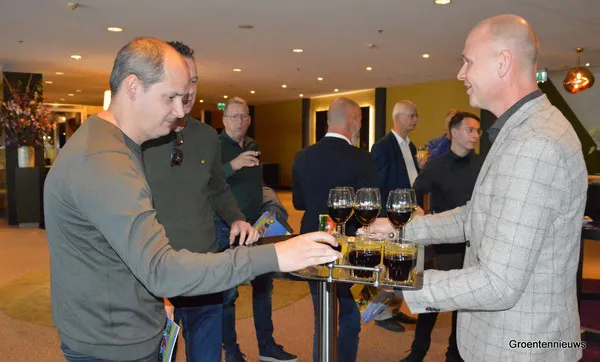
Moderator Stefan Stolk is a Jack of all trades, seen here handing out a drink to Joan Timmermans of NovaCropControl.

Marinus van der Lugt of Vortus and Marc Vijverberg of AAB toast the anniversary, with the door to the drinks room in the background.
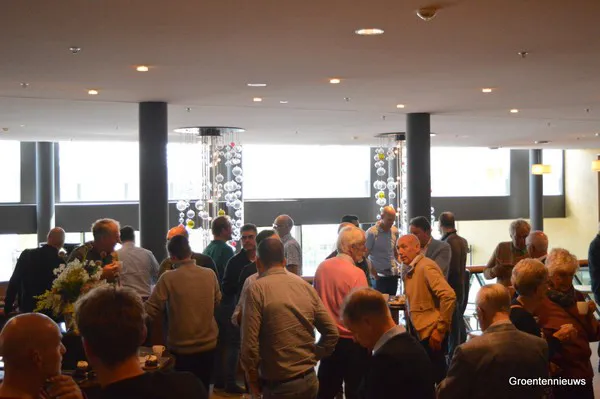
There was every opportunity to catch up with each other.
